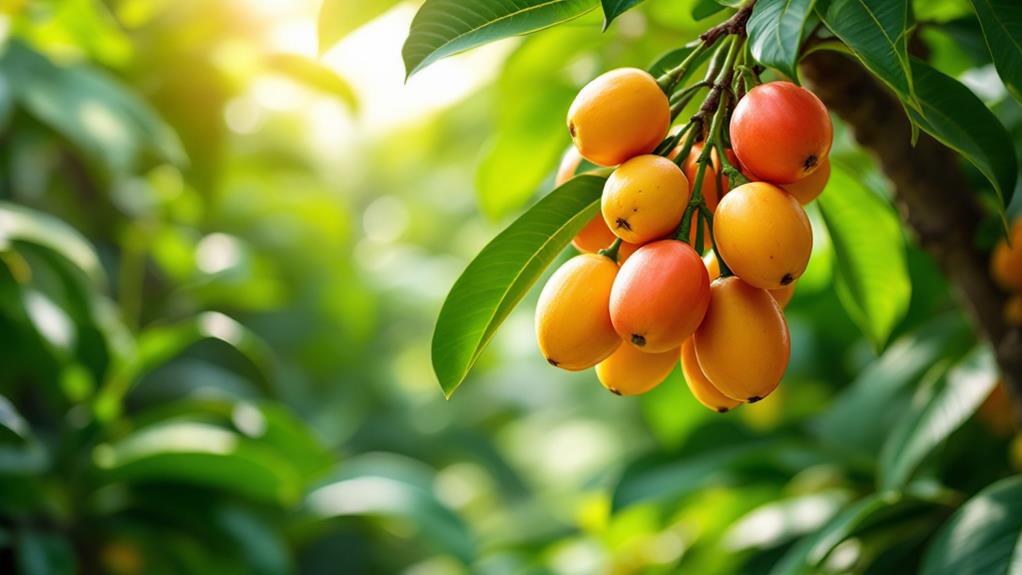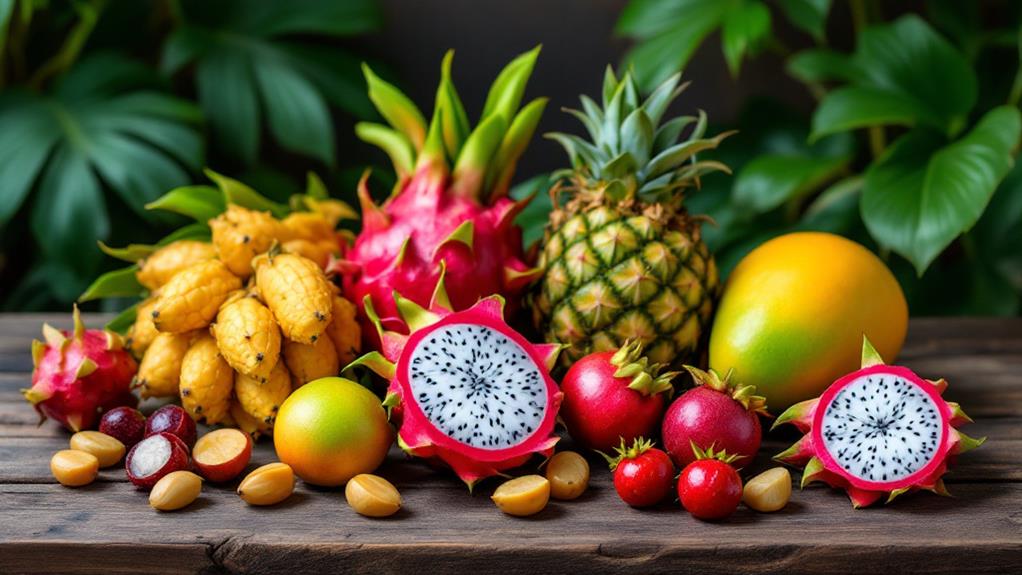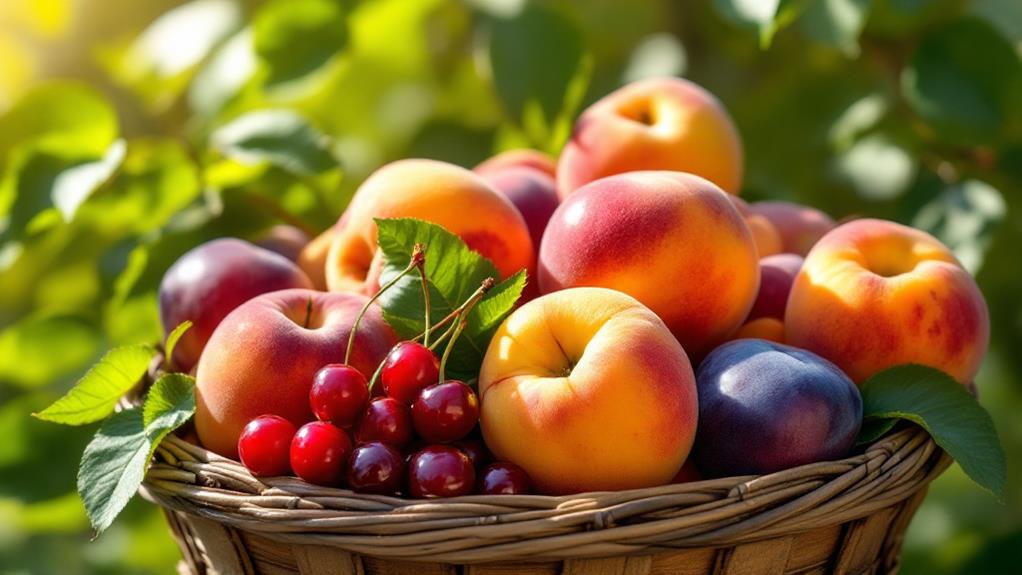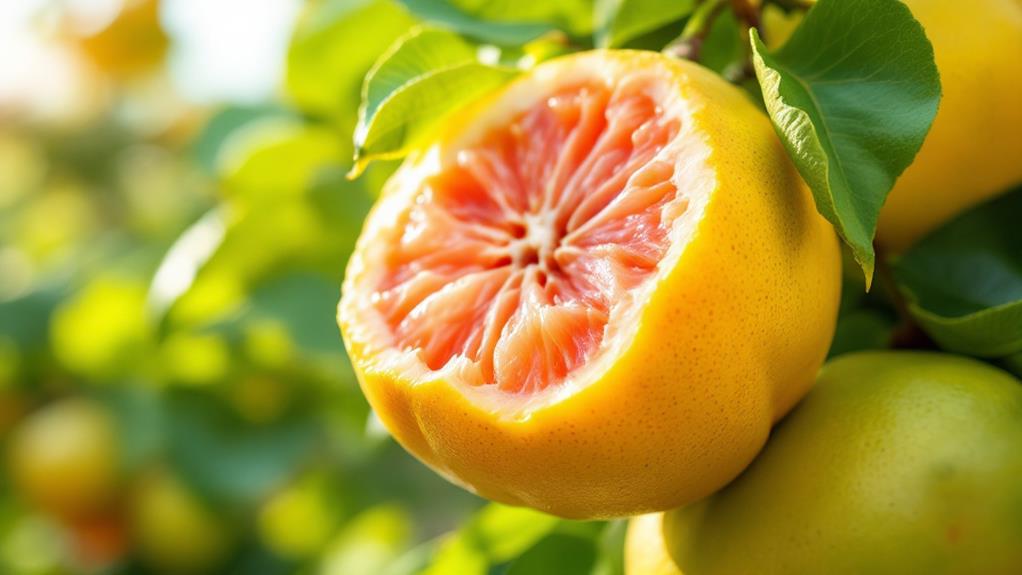Everything You Need to Know About Antidesma Bunius (Bignay Fruit)
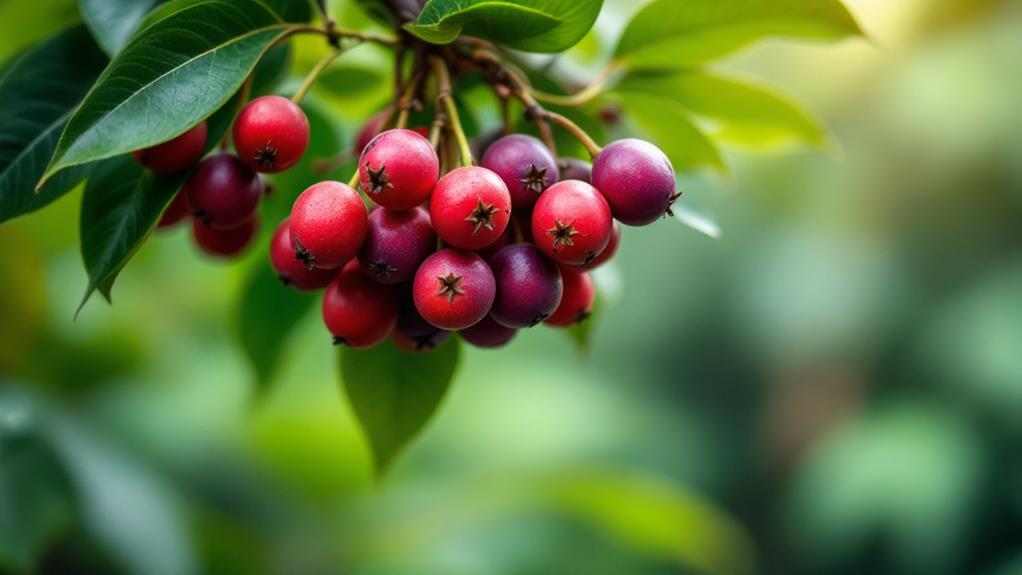
You're about to uncover the intriguing world of Antidesma Bunius, or Bignay fruit. These fruits grow on dioecious trees up to 10 meters tall, thriving in tropical climates with plenty of sun. Bignay's sweet-tart flavor improves salads, desserts, and traditional Filipino beverages like Bignay wine. Nutritionally, they're packed with vitamin C, calcium, iron, and antioxidants, promoting general health. Historically, Bignay holds cultural significance in the Philippines and has been prized for its medicinal uses. With the right care, including regular fertilization and pruning, Bignay trees can become a fruitful supplement to any garden. There's much more to reveal!
Botanical Features and Growth
Many gardeners and plant enthusiasts are drawn to the unique botanical features of the Bignay (Antidesma bunius). This tropical tree is fascinating due to its dioecious nature, which means you'll need both male and female trees to produce fruit. The Bignay's small, strongly scented flowers grow in clusters, with the male flowers being staminate, while the female flowers form long racemes necessary for fruiting. As you nurture these trees, you'll notice their glossy, dark green leaves, which are leathery and evergreen, reaching up to 20 cm in length.
Bignay trees can grow to impressive heights, ranging from 3 to 10 meters. Their growth thrives best in tropical climates, making them perfect for warm, humid environments. They're adaptable to different soil types, but prefer a pH between 6 and 7. Make sure they receive full sun or part shade for ideal growth. As the fruit matures, it shifts from white to a striking dark purple or black, providing a visual treat. Measuring less than 1 cm in diameter, the spherical fruit is a delightful feature of this tree, rewarding your efforts with its unique beauty and color.
Culinary Applications
Bignay fruits offer a flexible range of culinary applications that can improve your dishes with their unique sweet-tart flavor. When ripe, you can enjoy Bignay fruits raw, adding them to fresh salads or desserts for a delightful twist. Their sweet-tart taste makes them an excellent supplement to diverse culinary creations. If the berries are unripe, they work well as a vinegar substitute, providing a sour note that's perfect for balancing flavors in different recipes.
You can investigate Bignay fruits further by transforming them into jams, jellies, or syrups, allowing you to savor their flavor year-round. One popular culinary treat is Bignay wine, a cherished local drink in the Philippines, showcasing the fruit's versatility. Don't overlook the young Bignay leaves; they can be added to rice dishes, soups, and curries, lending a tart flavor that elevates your meal's overall taste.
For a revitalizing drink, the fruit's juice can be served on its own or used as a cocktail base. With so many culinary applications, Bignay fruit offers you a chance to experiment and add a unique twist to your cooking adventures.
Nutritional Benefits
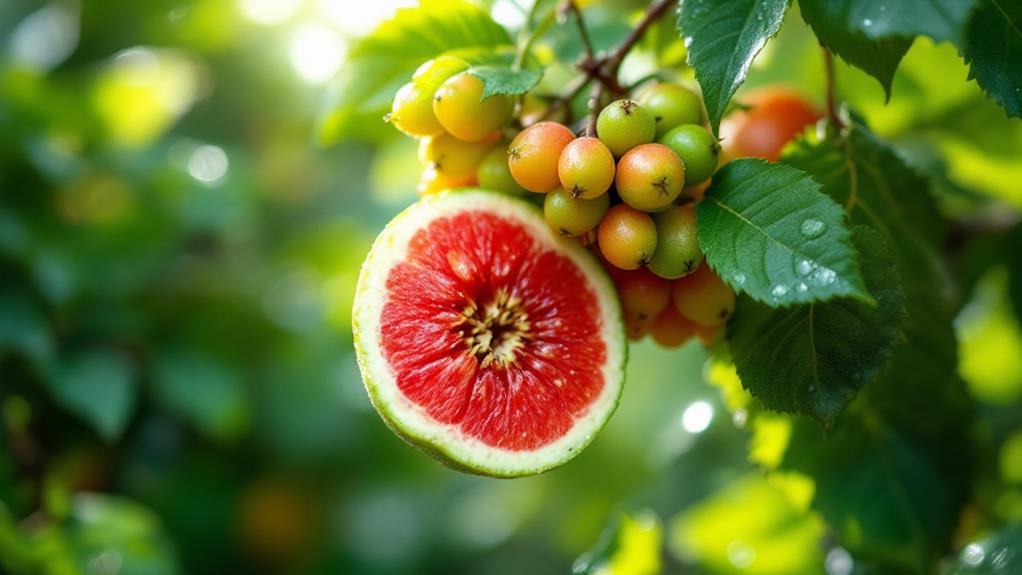
With its impressive nutritional profile, the Bignay fruit shouldn't be overlooked in your diet. Rich in vitamin C, Bignay fruits offer an enhancement to your immune system and help maintain healthy skin and tissues. They're also packed with calcium and iron, vital for bone health and preventing anemia. The fruit's high water content of 88.2% makes it a wonderfully hydrating food choice, perfect for keeping you refreshed.
Bignay fruits are a potent source of antioxidants, particularly anthocyanins. These compounds play an important role in protecting your cells from oxidative stress and may support cardiovascular health. With each 100 grams containing approximately 10 grams of carbohydrates, they provide a quick energy source without overloading your system.
Traditionally used in herbal medicine, Bignay fruits boast anti-inflammatory properties. They may help alleviate symptoms of inflammation-related conditions and have been linked to treating ailments like anemia and heart problems. When you consider that the edible portion of Bignay accounts for about 65-80% of its total weight, it's clear that its nutritional value is significant. Including Bignay in your diet could contribute to improved general health and well-being.
Cultural and Historical Significance
As you investigate the numerous health benefits of Antidesma Bunius, it's just as fascinating to reflect on its cultural and historical roots. Bignay, also known as Bugnay in the Philippines, holds significant cultural importance, especially in Southeast Asia. Traditionally, people have foraged Bignay from wild trees, recognizing its value as a rare fruit. Here are some key points about its cultural and historical significance:
- Cultural Significance: In the Philippines, Bignay is a staple in local cuisine and beverages, particularly the renowned Bignay wine. Its use in these areas underscores its deep-rooted cultural ties.
- Introduction to the West: Dr. David Fairchild played a crucial role in introducing Bignay to South Florida in the early 20th century. He promoted its cultivation at the Fairchild Tropical Botanic Garden, emphasizing its potential as an alternative berry.
- Herbal Medicine: Traditionally, Bignay leaves and fruits have been used in herbal medicine, particularly for treating anemia and enhancing general health.
- Ornamental Qualities: Beyond its edible fruits, Bignay trees are cherished for their ornamental qualities. They are often planted in gardens for their dense foliage and fragrant flowers, adding aesthetic value to landscapes.
Care and Maintenance Tips
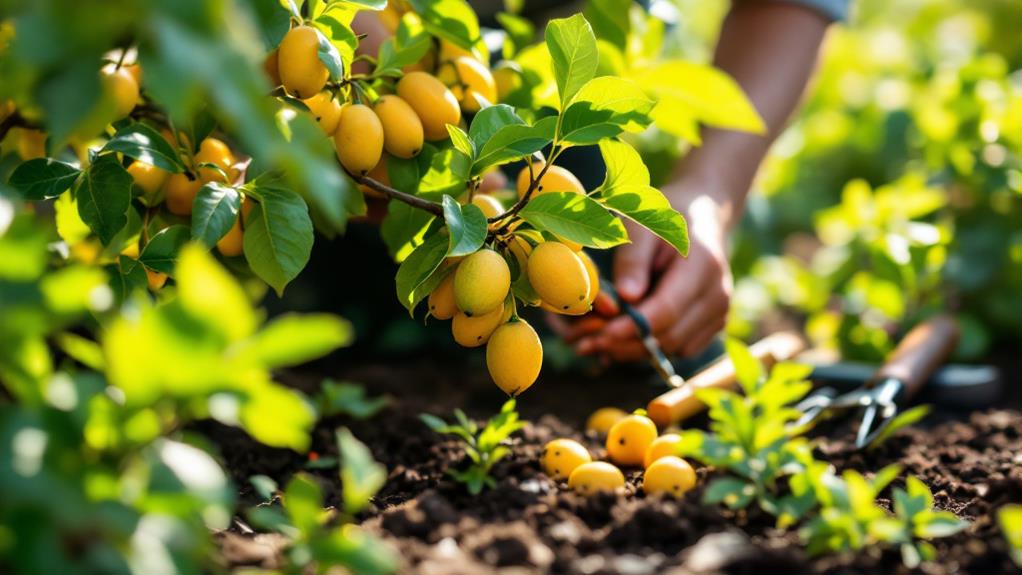
To guarantee your Antidesma Bunius thrives, proper care and maintenance are essential. Start by focusing on how you fertilize your Bignay trees. Apply a general-purpose fertilizer two to three times a year during the warm months. This promotes healthy growth and boosts fruit production. Balanced fertilization is key; overdoing it can lead to pest problems and damage your tree's health.
Pruning is another important task. In spring, prune your Bignay trees to shape them and encourage optimal growth. Regular pruning helps maintain a manageable size and enhances fruit yield. Don't skip this step if you want your tree to flourish.
Protecting your Bignay trees from environmental stressors is vital. Frost and drying winds can severely affect the tree's health and fruit production. Make sure your trees are shielded from these conditions as part of your routine maintenance.
Pests like mealybugs and scale can also pose threats. Keep an eye out for these pests and treat infested areas with horticultural oil as needed. By following these care and maintenance tips, you'll guarantee your Bignay trees stay healthy and productive year after year.

